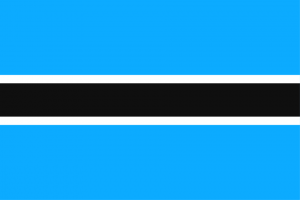Language/Tswana/Culture/Traditional-Clothing
| ◀️ Demonstrative Pronouns and Adjectives — Previous Lesson | Next Lesson — Tswana Cuisine ▶️ |
Traditional Clothing is an essential aspect of Tswana culture. Tswana people take pride in their clothes and often wear it to show their cultural and traditional heritage. This lesson will explore the traditional clothing of the Tswana people, including the significance of different garments and accessories.
Attire for Women
The traditional dress for women in Tswana culture is a long skirt or dress called a 'pelete.' Women wear colorful head wraps known as 'doeks,' which they wrap around their heads in beautiful patterns. Doeks can be made of various fabrics, including cotton, wool, and silk, and come in several colors and designs.
Malaika
Malaika is a term used to describe Tswana women's formal traditional attire. This term is a beautiful word that means 'angel.' The outfit comprises of the pelete and a short blazer, typically made of satin or silk. The blazer is often brightly colored with intricate patterns and designs.
Women wear accessories such as necklaces, bracelets, and earrings to enhance their appearance. Most of these decorations are made of traditional beads and shells, while some are made of modern materials such as metal.
Attire for Men
Traditionally, men's Tswana attire comprises of a shirt known locally as 'semene' and matching pants known as 'ditlhapi.' The shirt is usually made of pure cotton or linen and features long sleeves and a collar. The Ditlhapi, on the other hand, is made of sturdy material such as cotton or denim.
Men also wear accessories such as bracelets, necklaces, belts, and hats. Colorful beads and shells are frequently used to make necklaces and bracelets.
The Tswana attire for men and women typically consists of bright colors and patterns. The clothes signify the Tswana culture's vibrancy and the people's close connection to their traditions.
Significance of Traditional Clothing
Tswana traditional clothing plays an essential role in connecting the people to their roots and traditions. The vibrant and colorful attire tells a story of the Tswana people's heritage, customs, and social standing.
The women's attire, for instance, showcases their beauty, dignity, and femininity. The colorful doeks and pelete show the Tswana women's proud and self-confident spirit.
The men's attire, on the other hand, signifies the Tswana men's strength and courage. The Ditlhapi and Semene clothing combination reveal the men's straightforward but elegant nature.
Overall, the Tswana traditional clothing represents the people's values, beliefs, and social standing. It is a symbol of pride and identity for the Tswana people.
Vocabulary
Below is a table with some of the Tswana vocabulary used in traditional clothing:
| Tswana | Pronunciation | English |
|---|---|---|
| pelete | peh-leh-teh | A long skirt or dress |
| doeks | do-esk | A colorful head wrap worn by women |
| malaika | mah-lah-ee-kah | Formal traditional attire for women |
| semene | seh-meh-neh | A shirt worn by men |
| ditlhapi | dee-til-haa-pii | Matching pants worn by men |
Conclusion
In conclusion, Tswana traditional clothing plays a significant role in the culture and heritage of the Tswana people. It is a symbol of pride and identity for the people, showcasing their values, beliefs, and social standing.
Understanding traditional clothing vocabulary and its significance provides a window into Tswana culture and worldview. By learning about traditional clothing, we gain a deeper appreciation of the Tswana people's unique and dynamic cultural heritage.
Videos
Traditional Tswana Dance -Wedding Dance - YouTube
Amazing Tswana Traditional Dance - YouTube
Other Lessons
- Botswana Timeline
- National Holidays
- Internet resources for learning Tswana
- Tswana Cuisine
- Traditional Celebrations
Sources
- TRADITIONAL ATTIRE OF BOTSWANA – Inspiration with Lois ...
- Tswana people - Wikipedia
- Traditional clothing of Botswana. Modest European dress combined ...
| ◀️ Demonstrative Pronouns and Adjectives — Previous Lesson | Next Lesson — Tswana Cuisine ▶️ |

